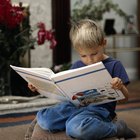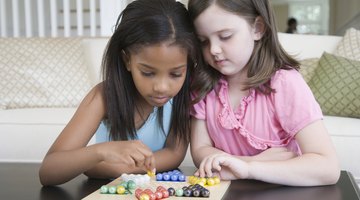Define Physical Development
Physical development is the process that starts in human infancy and continues into late adolescent concentrating on gross and fine motor skills as well as puberty. Physical development involves developing control over the body, particularly muscles and physical coordination.
The peak of physical development happens in childhood and is therefore a crucial time for neurological brain development and body coordination to encourage specific activities such as grasping, writing, crawling, and walking.
As a child learns what their bodies can do, they gain self confidence, promoting social and emotional development. Physical activities geared toward aiding in physical development contribute significantly to a person’s health and well-being, according to the Surgeon General’s report.
Gross Motor Control
Moving the large muscles in the body, specifically the arms and legs consciously and deliberately, increases gross motor skills. Gross motor control involves balance and stability with such movement as kicking, running, jumping, hopping, skipping, throwing, catching and galloping.
Fine Motor Control

Toddler Development at 21 Months Old
Learn More
Achieving fine motor control involves using and coordinating the small muscles in the hand and wrists with mastery. During the development process, children have the ability to self-help and manipulate small objects such as scissors and writing tools. Fine motor skills generally follow gross motor development.
Forms of Gross Motor Dysfunction
Some signs of gross motor dysfunction among children are difficulty perceiving the location of the body in a static position, keeping track of movement while engaging in a motor activity, difficulty following directions, trouble translating verbal inputs into the appropriate responses, and poor coordination of muscle groups.
Diseases and disorders that affect gross motor skill development and skills among children are developmental problems such as genetic disorders, muscular dystrophy, cerebral palsy and some neurological conditions. In addition, gross motor skills can become impaired due to injury, illness, stroke and congenital deformities.
Fine Motor Dysfunction

What Should a Child Know Before Starting Pre-K?
Learn More
Signs of fine motor dysfunction among children include trouble mastering basic self-help skills such as getting dressed or putting on shoes, difficulty drawing, tracing objects with a pencil, manipulating scissors and frequent frustration when learning new activities.
A child's fine motor skills should have developed sufficiently by the age of six enough to complete writing, dressing and feeding tasks. Adequate dexterity, bilateral coordination and eye-hand coordination to complete writing and cutting tasks are also evident. After the age of six, children continue to develop and refine these skills with continuous activities, including play with toys and games during early childhood.
Parental Involvement
Play is the most beneficial activity for promoting early childhood physical development.
The most significant factor children need from play with parents is to have fun while doing it. However, it is important not to turn play into lessons. The most efficient way to play with your child is to provide interesting and exciting environments like pretend play at home as well as frequent visits to playgrounds, children’s gyms, and/or other community facilities designed just for children.
Parents must have time to play and follow the child’s lead. Parents should also encourage children to talk about the details of the activities completed and places they have been.











